Ana Aslan was born in January 1897, the youngest child of a highly educated Armenian family in Brăila. At her birth, her father, Margarit Aslan, was 54 years old while her mother, Sofia Aslan (formerly known as Popovici) was 20 years his junior. Among their famous relatives were philosopher and writer Garabet Aslan, as well as playwright I. C. Aslan. Her mother was descending from an old family in Bucovina, spoke several foreign languages and was a lover of literature and classical music.
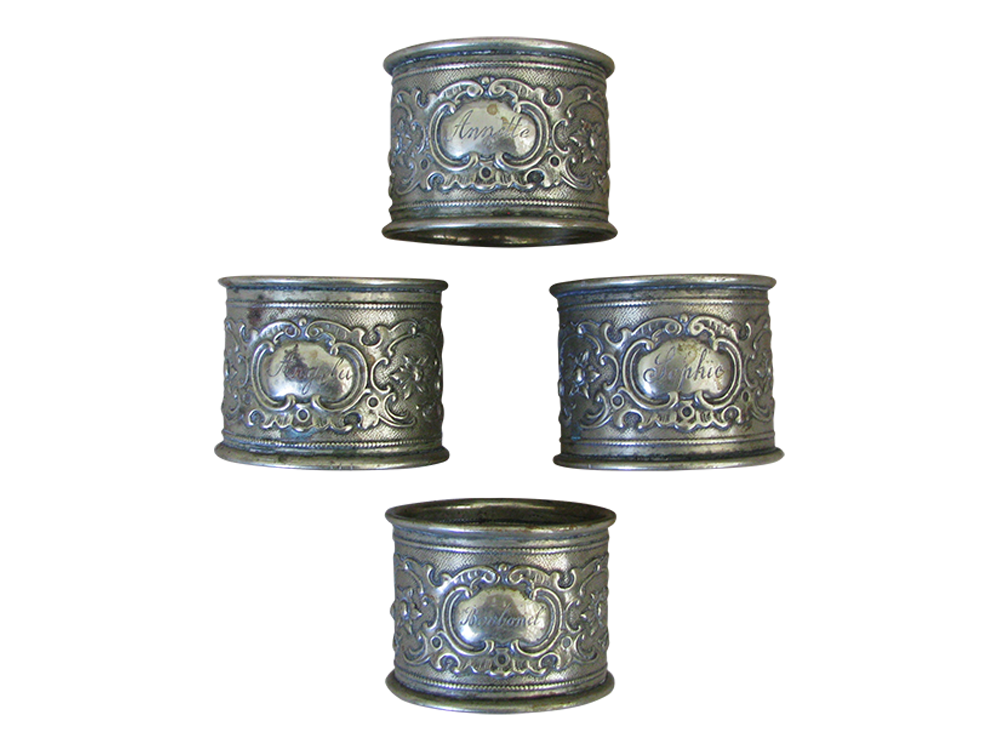
Table rings with decorative elements
and inscriptions for Annette (Ana),
Sophia (mother), Angela (sister), Bombonel (brother)
Property of the “Ana Aslan” Foundation with the Institute of
Geriatrics and Gerontology “Ana Aslan”
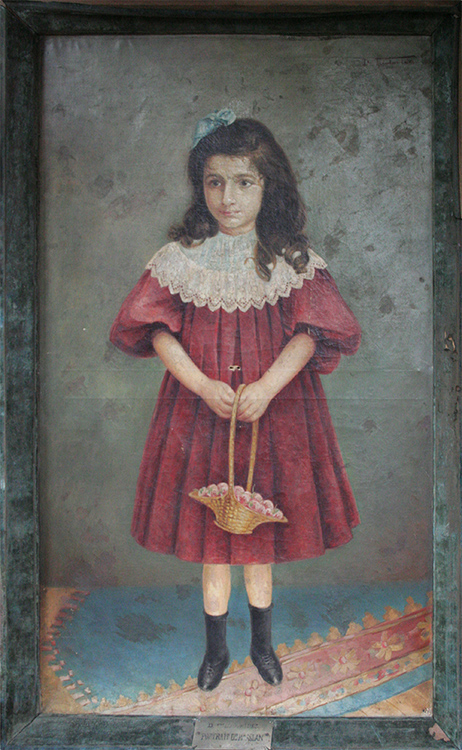
Portrait of young Ana Aslan;
dated cca. 1902, author D. Theodorides.
Property of the “Carol I” Brăila Museum
The family fortunes shrank considerably over time, due to several uninspired investments as well as her father’s passion for gambling. The Aslan family placed great emphasis on the education of all four of their children. The boys, Bombonel and Sergiu became chemistry engineers, licensed in Dresden, while Angela, the older sister, was remarkably talented in the arts, primarily in painting.
The youngest daughter, Ana, was seriously shaken by the death of her father after a lengthy suffering, at a time when she was only 13 years old. The death of her father spurred her determined fascination with understanding old age and for finding a way to reverse the course of life, which made gerontology an obvious path of interest for the young Ana.
Ana Aslan began her studies at the Romaşcanu College in Brăila, but after the death of her father, her family moved to Bucharest where she continued her education at the Central School until her graduation in 1915.
She had initially dreamed of becoming a pilot, and was a huge admirer of Aurel Vlaicu’s flights (she had also flown an aircraft of the Bristol Coandă type alongside pilot Andrei Popovici). Yet after studying anatomy in the 8th grade she decided to become a doctor, a job which at the time was not considered suitable for women. In her attempt of convincing her family to accept this choice, she refrained from eating for three days straight. She would start her studies at the University of Bucharest in 1915, and graduate in 1922.
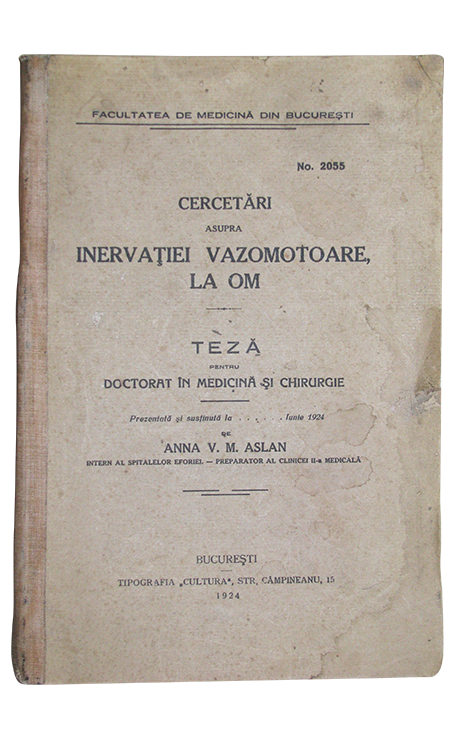
Doctor Thesis, Ana Aslan
Property of the “Ana Aslan” Foundation
During her studies she worked in hospitals, in order to make a living. Throughout the course of World War I she was mobilized to Iaşi as a student and would attend to patients in military hospitals, first in the contagious disease wards and later in surgery units. There she would work alongside Toma Ionescu, the founder of the Romanian surgery school. In 1919 she returned to Bucharest and had the privilege to work with Professor Gheorghe Marinescu, founder of the Romanian school of neurology.
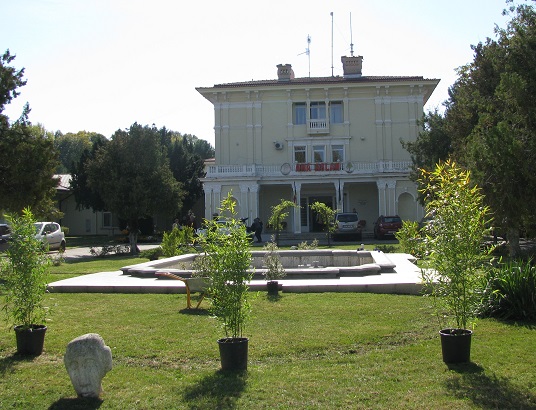
Headquarters of “Ana Aslan”
Geriatrics and Gerontology Institute, Otopeni
When It came time to sit the examination for the position of General Physician, she ranked first among 32 contestants. After graduating from medical school in 1922, she was appointed university assistant at Clinic no. 2 in Bucharest, under the direction of Daniel Danielopolu. Under his guidance, she went on to complete her doctoral thesis in just two years on the topic of Research on Vasomotor Innervation in Humans.
Ana Aslan worked at the Filantropia Hospital, at the Medico-Clinical Institute at the Bucharest University of Medicine and at the Railway Hospital (otherwise known as the CFR hospital) Between 1945 and 1949, she held the position of professor at the Medical Clinic in Timişoara, and it is notable that she was the first ever woman cardiologist, and also the first woman professor to chair a medical clinic. Even though she was a highly competent therapist, she was avoided by many patients as, at the time, the majority of the population was used to being examined by male doctors.
She would have her first encouraging results in Timişoara, where, on April 15th 1949, in her role as head of a medical clinic she was to grant treatment to a medicine student with acute arthrosis, who had come in after a three weeks long state of crisis. This is how Ana Aslan related the circumstances: “I was already using procaine, active in vasodilation and regulation of the neuro-vegetative system, as described by Claude Leriche, in treating affection of peripheral circulation and arteritis.
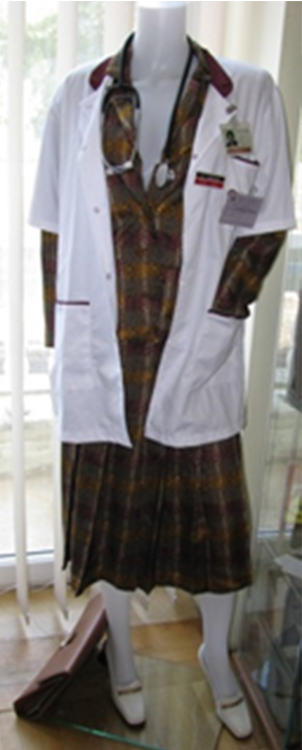
Ana Aslan’s work outfit.
Property of the “Ana Aslan” Foundation
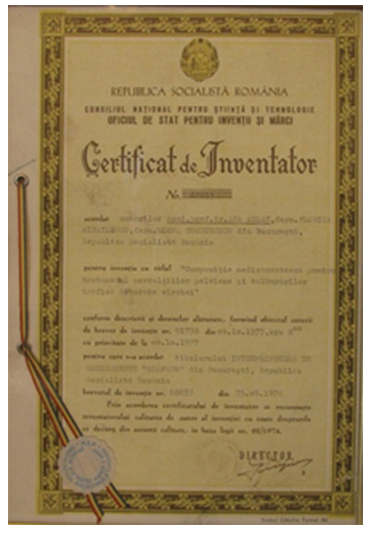
Certificate of Inventor 1978
Property of the “Ana Aslan” Foundation
The possibility of using the same cure in rheumatic affections had preoccupied me for quite some time. I asked for the young man’s permission to administer him 10 cc of 1% procaine solution into the femoral artery. Several minutes later the patient was able to bend his knee. I continued administering procaine; after a few days he was able to leave the hospital”.
Ana Aslan would come to consider this as being the starting point of her research. Once returned to Bucharest, she shared the results found with her second mentor, the renowned endocrinologist I.C. Parhon, who identified her potential as a scientist and encouraged her to continue her research in an alms home. This discovery would lead her to give up her university career and dedicate her life and endeavours to the study of procaine.
January 22nd 1952 marked the opening of the first geriatric institute in the world; initially lead by C. I. Parhon, after 1958 it would come to be headed by Ana Aslan until her death. The headquarters of the institute had been built according to the blueprint of architect I. D. Berindei at the end of the 19th century, under the patronage of Queen Elisabeth of Romania, and was initially designed to be an alms home. As mentioned by Academy member N. Vasilescu Carpen during a session at the Romanian Academy, one of the most important merits of C. I. Parhon was his distinction between biologic age and chronological age.
Ana Aslan decided to continue C. I. Parhon’s work and went on to prove that it was possible for an elderly person to have a healthy and active life. In 1958, the Geriatrics Institute opened a section of social gerontology with an aim of studying old age, not only from a medical perspective, but also from a social, economic, psychological and demographic one. The World Health Organization has been commending the Geriatrics Institute in Romania ever since 1964, singling it out as an organizational example for all similar institutions in the world. As there were many requests for treatment, in 1974 the institute was allotted a headquarters located in Otopeni, near Bucharest, on the site of a former Sanatorium of the Central Committee of the Communist Party.
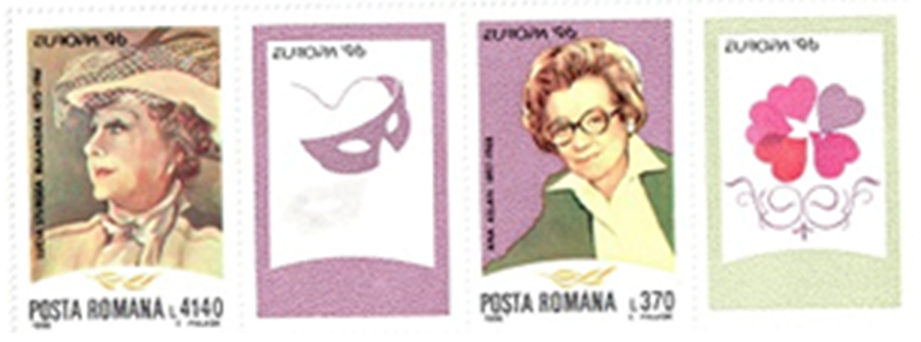
Stamp issue: EUROPE ’96 FAMOUS WOMEN,
two stamps with vignette (Ana Aslan and Lucia Sturdza Bulandra).
140,000 copies; Designer: Eugen Palade
A research group was set up in May 1951, involving patients with rheumatic diseases, such as arthroses, arthritis, and rheumatic polyarthritis. The group comprised 14 elderly people from an alms home, as well as 7 volunteers who were administered treatments with injectable procaine.
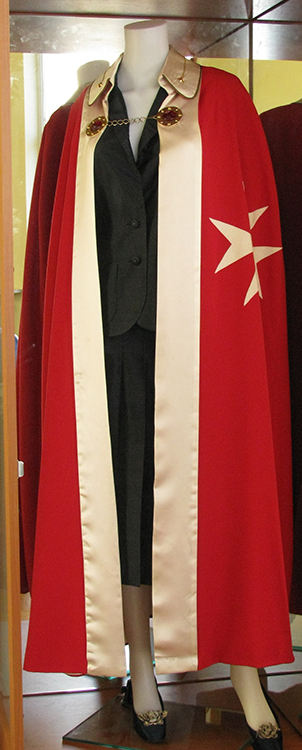
Cape of Knight of the Order of Malta
Property of the “Ana Aslan” Foundation
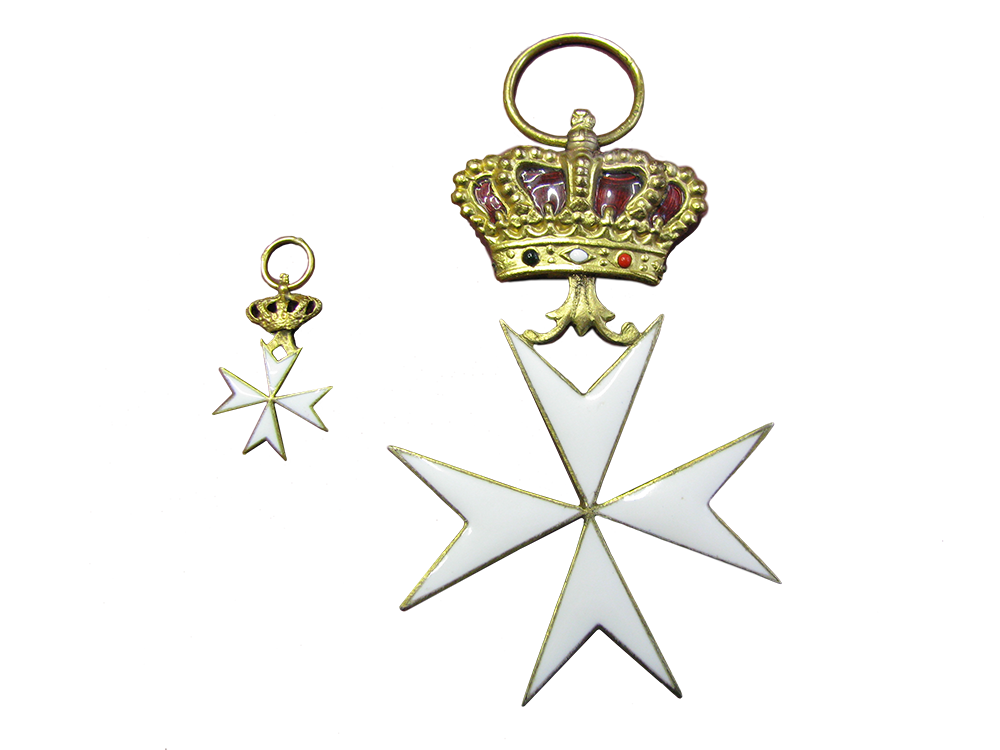
Knight of the Order of Malta,
1974 Property of the Museum
of the National Bank of Romania
It was found that, beside its beneficial effects in treating rheumatic diseases, procaine was also improving the general state and memory of elderly people. Ana Aslan subjected herself to the treatment in order to get to better know and understand its effects. Some early results of this research are to be found in a study conducted by Ana Aslan and C. I. Parhon published by the Romanian Academy in 1955 entitled: “Novocain: an euphoric and youth furthering factor in prophylaxis and the cure of old age”. In terms of international exposure, the results of the research were presented in 1956 at the European Congress of Gerontology in Basel and at the Therapiewoche in Karlsruhe. At first, the scientific community and the pharmaceutical industry had their reservations in receiving research results by a woman from an Eastern Communist country. However, those specialists that ended up testing and administering the treatment found the relevance of Ana Aslan’s conclusions.
After extensive testing on 7,600 patients, the Ministry of Health sanctioned Gerovital H3 in 1957 and approved a mass production of the substance by the pharmaceutical industry, initially in vial form and in 1962 in pill form, therapeutic cream and head lotion. The treatment was subsequently licensed by 30 foreign countries.
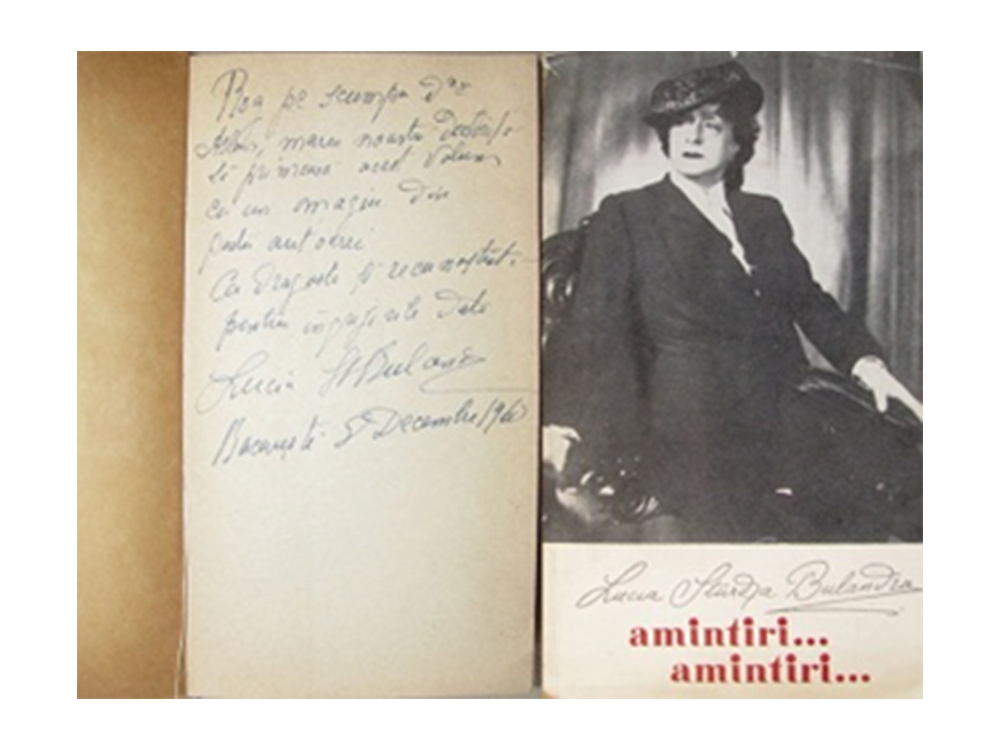
Book of Lucia Sturdza Bulandra, Ana Aslan’s patient:
“Memories… Memories…” with the dedication of the author.
Property of the “Ana Aslan” Foundation
After extensive testing on 7,600 patients, the Ministry of Health sanctioned Gerovital H3 in 1957 and approved a mass production of the substance by the pharmaceutical industry, initially in vial form and in 1962 in pill form, therapeutic cream and head lotion. The treatment was subsequently licensed by 30 foreign countries.
In 1960 Ana Aslan would begin research for a new eutrophic product, which would contain not only procaine, but also an activator and anti-actrogenin. This compound was used in therapies for improving the nervous and cardiovascular systems.
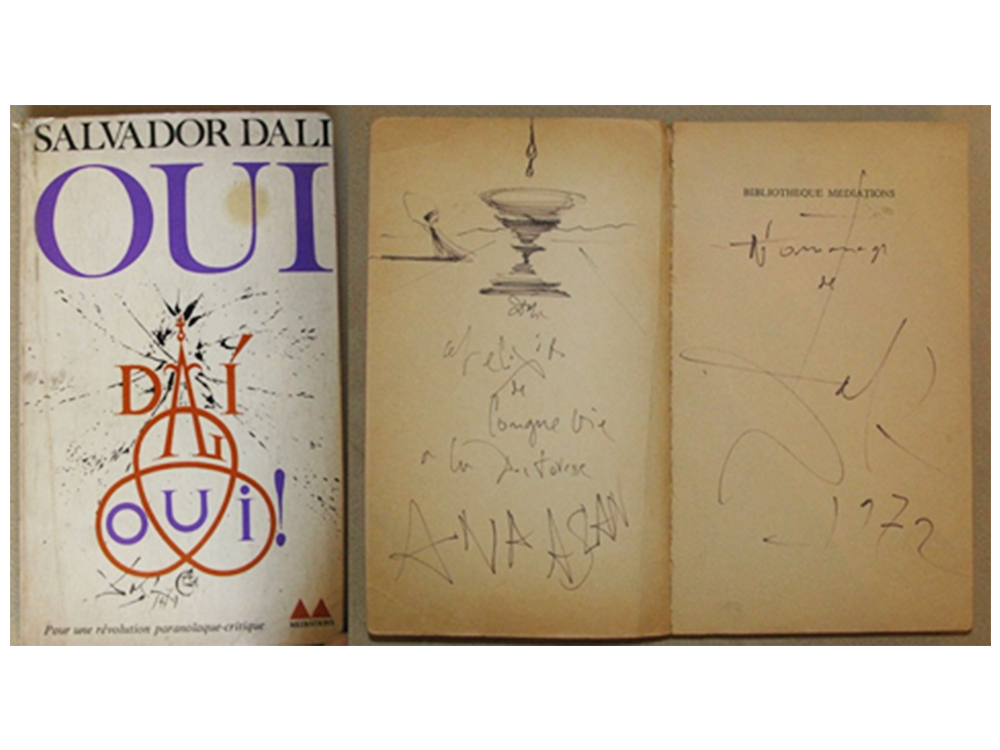
Book of Salvador Dali, with the dedication
of the authorProperty of the “Ana Aslan” Foundation
In 1980, Aslan would be granted the inventor patent for Aslavital, in cooperation with I. Polovrăgeanu Both Gerovital H3 and Aslavital are registered trademarks and are guaranteed by the signature of Ana Aslan. A significant aspect in the success of both products is that they have been registered in 154 countries.
Aslan’s research activity was doubled by her institutional activity.
The Romanian Society for Gerontology and Geriatrics was established in 1959, and Ana Aslan would be its President up until her death. She was a member of the Executive Bureau of the International Gerontology Association, and starting in 1974, she began talks with the United Nations for organizing an ample event dedicated to third age. This project came to life in 1982 in Vienna, with the opening of the World Assembly for the Third Age, with the slogan “let’s give life to years”. Also in 1974 she became a member of the Romanian Academy, for exceptional results.
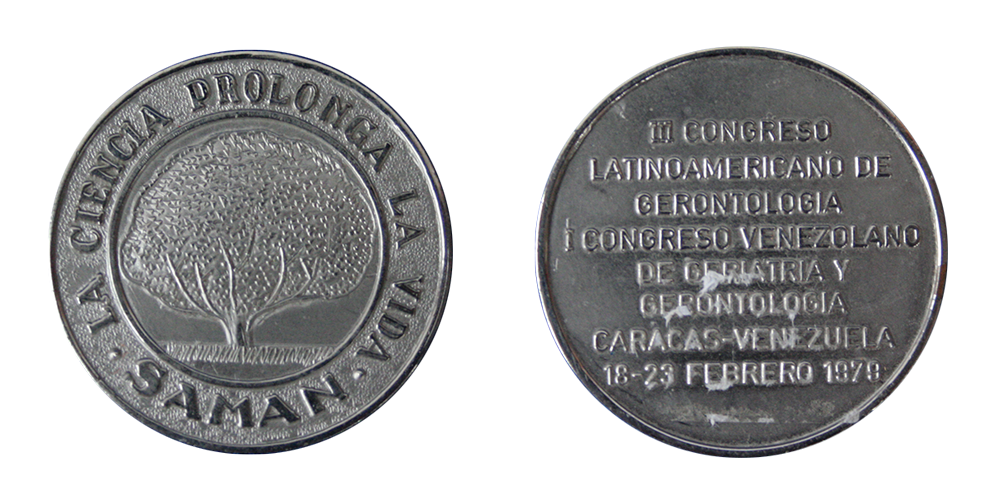
Medal of the Gerontology Congress in Caracas (Venezuela), 1979
Property of the “Carol I” Museum, Brăila
In 1985, The Romanian Journal of Gerontology and Geriatrics published a synthesis on “Methods and Effects of Gerovital H3 after 34 years of Treatment”, which shares the results of the research group under the leadership of Ana Aslan.
Ana Aslan’s care for the elderly would reach out to accommodate elderly people that had had their houses confiscated by the communist regime, on political grounds, or to those that had been political prisoners and were left with no means of subsistence. Therefore, her patients would also include members of famous families like Ghica, Sutuzu, Catargi, Mihalache and others. An investigation was opened and Ana Aslan was found guilty for not cashing up pensions of people accommodated in the home, as provided in the case of social assistance institutions. In her defense, she said that in exchange for their accommodation, the elderly were subjects in clinical trials (running over more than 30 years, a trial unique in terms of duration). In 1978 she was charged a 1,500,000 lei fine, at a time when her monthly salary was only 9,000 lei. For 7 years she was subject to a trial at the High Court of Audit. She was cleared of all charged only 6 months before her death.

Gold bracelet belonging to Ana Aslan
Property of the NBR Museum

Gold bracelet belonging to Ana Aslan
Property of the NBR Museum
Ana Aslan’s surveys had a great impact on the medical world and on public opinion. An archive with letters received by Ana Aslan comprises 130,000 items sent from over 130 countries and includes letters of gratitude from patients, but also professional correspondence with specialists in the medical field.